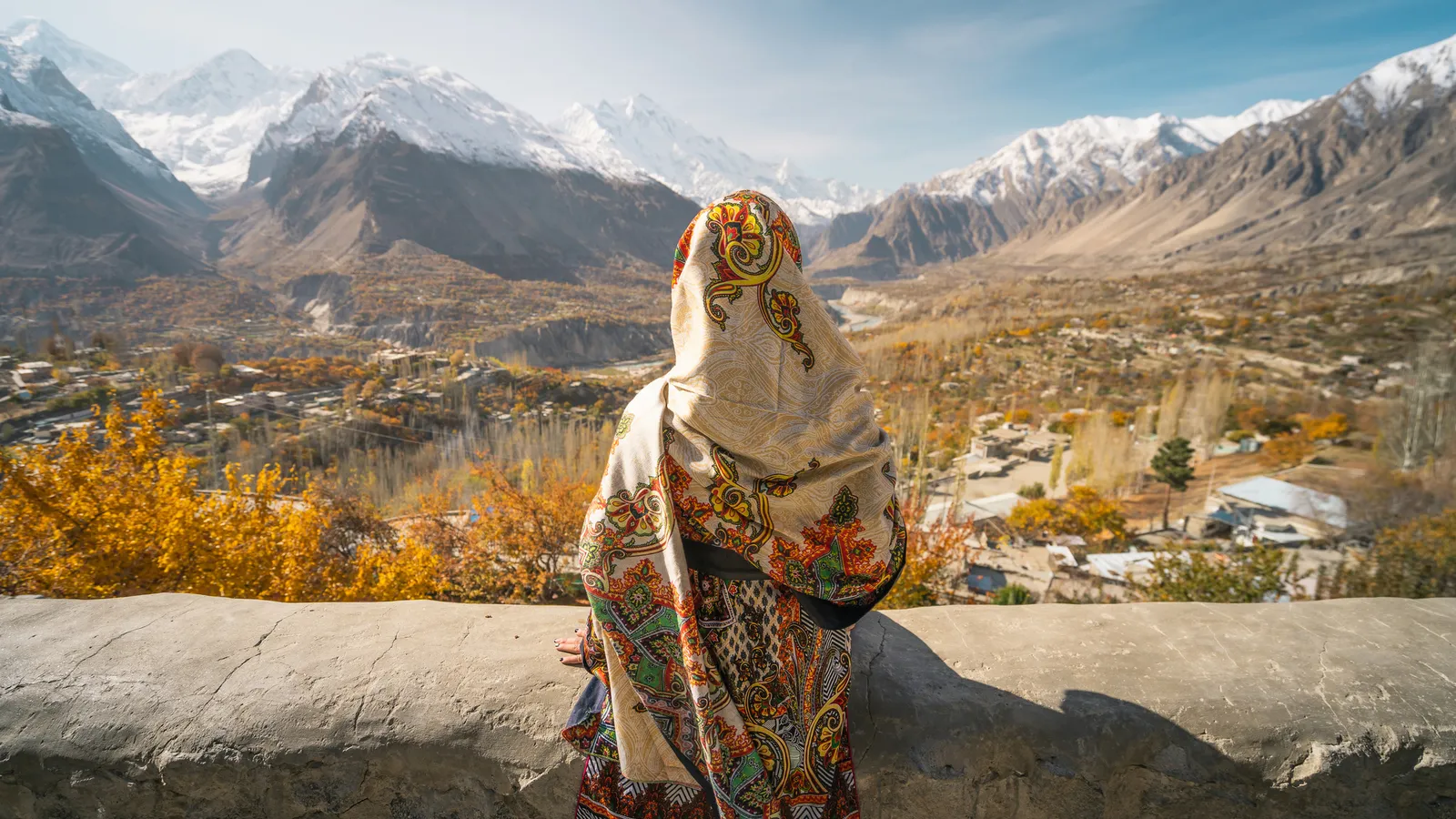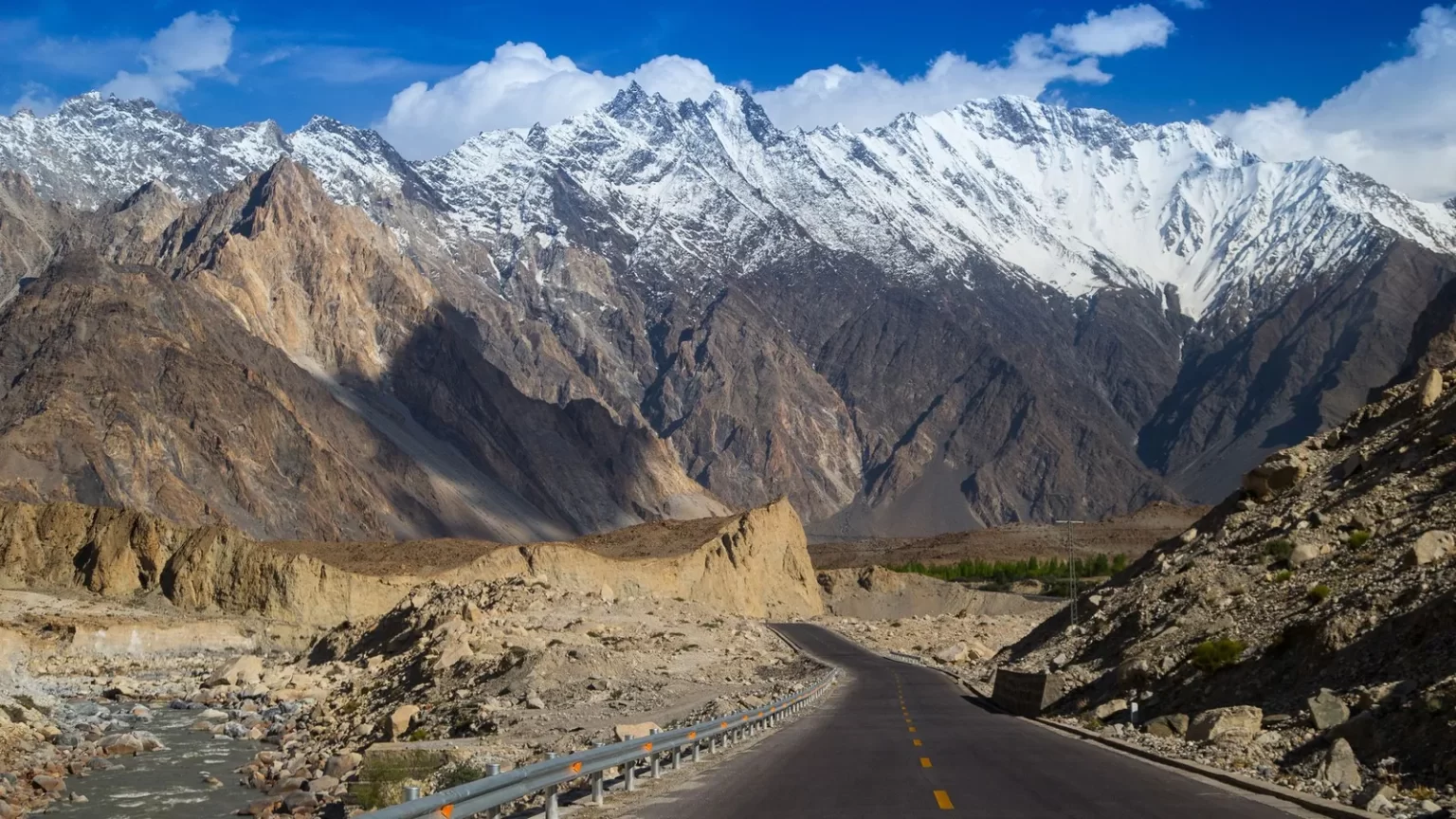Crisp mountain air rushed in through the car window as I drove past jagged mountain landscapes. Despite summer being in full swing, massive amounts of snowpack still clung to the 7,000m peaks. Glacial waterfalls dripped down to feed the aquamarine river below, through Pakistan's high-altitude Hunza Valley that was aptly termed “Shangri La” by British novelist James Hilton.
I was driving the Karakoram Highway (KKH), which cuts through some of the most astounding rock faces on the planet. Often coined the “Eighth Wonder of the World”, it's a road trip of dreams, yet few have ever heard of it, or how it came to be.
The KKH was once a leg of the Silk Road, with its foundations built by locals centuries ago. However, it wasn't until 1978 – after nearly 20 years of construction by more than 24,000 Pakistani and Chinese workers – that it was officially inaugurated for vehicles, which brought trade, tourism and ease of travel to this remote part of the world.
The 1,300km highway extends from the small city of Hasan Abdal near Pakistan's capital of Islamabad to Kashgar in China's autonomous Xinjiang region via Khunjerab, the highest paved border crossing in the world at about 4,700m. But I was drawn to the 194km stretch of the highway that runs through the Hunza Valley, a region surrounded by the Karakoram Mountains that give the highway its name. This impossibly beautiful section is where you can see pristine glaciers, alpine lakes and snow-capped peaks right from the comfort of your ride. However, as alluring as the journey is, it's the incredible people and traditions of the Hunza Valley that make this part of the highway so special.

Nestled in the Gilgit Baltistan territory between Xinjiang and Afghanistan's Wakhan Corridor, Hunza was mostly cut off from the world until the 20th Century due to the formidable geography. Primarily home to the Burusho and Wakhi people, the remote region has its own languages, music and culture that's unlike anything you'd find in Pakistan – or anywhere else in the world.
While the KKH has opened up the valley, it has also negatively impacted the environmentally fragile region and led many to leave the communities' traditional ways of life. Now, the number of locals observing long-celebrated festivals like Ginani (the coming of spring) and those wearing the region's traditional embroidered robes has dwindled.
Still, some locals are working hard to preserve the unique traditions of the Hunza Valley.
The first stop on my road trip was Altit, a village famed for its 1,100-year-old fort and its commitment to cultural preservation. Here I met musician Mujib Ruzik in a cafe as the snow-capped giants of Rakaposhi (7,788m) and Diran (7,266m) stretched out into the distance. A few steps away was the Leif Larsen Music Center, a school that seeks to keep the traditional music of the valley alive by teaching it to the next generation.
“We were dependent on music, because music was associated with each and every aspect of life, like if you were doing cultivation or cutting the wheat [we would be singing traditional folk songs],” said Ruzik. “But the young people do not know about that. But now after engaging them in musical practices, [they're learning] what is the real essence of culture.”
The music centre was established in 2016, but Ruzik explained that it didn't really get its start until Zia Ul Karim began teaching the students. While folk music had typically been enjoyed as a hobby, Ul Karim, who was born and raised in Altit, was one of the first to pursue a degree in musicology and was a maestro of numerous instruments. He taught more than 100 students of varying ages and ability levels until his tragic death in a 2022 motorcycle accident.
Ruzik took me into the practice room, which mirrored a local home: dusheks (pads to sit on) lined the four walls and diros (pillows) acted as our chairs as nearly a dozen students gathered around. Though Pakistan is a deeply patriarchal country, Hunza is known for being the most liberal region, in part due to the predominance of Ismailism, a moderate sect of Islam known for promoting tolerance and women's rights. Education and sports are encouraged for girls, and many go on to study at university and beyond. Thanks to the inclusive learning space that has been fostered here, several young girls sat among the group excitedly holding their lute-like wooden rubabs.
Next, three students demonstrated hareep music (the local term for traditional Hunza tunes), playing a stringed rubab outfitted with shimmering scales; a long, thin sitar; and the dadang, a thick, hand-held drum covered in red and green stripes. The hypnotic sounds filled the air and left me with a resounding sense of joy that the folk music of Central Hunza will prevail for a while longer.
After making my way out of the cobblestoned streets of Old Altit, I drove back on the KKH toward what is arguably its most famous section: Upper Hunza, locally known as Gojal.
Despite sharing a similar culture to Central Hunza, Gojalis speak Wakhi (which has no relation to Burushaski) and are believed to have migrated from the neighbouring Wakhan Corridor hundreds of years ago. Before the highway opened, it took days to travel between the two Hunza regions. Now, it was just an hour before the striking, azure-coloured Attabad Lake served as my welcome to the region.
As natural as it may seem, Attabad Lake is actually artificial, and was born from tragedy. On 4 January 2010, a massive landslide obliterated several villages and blocked the flow of the Hunza River, creating an artificial lake in the process. Now surrounded by luxury hotels, the lake – named for a village the landslide destroyed – seemed to be the poster child of Hunza's modernisation, as was the KKH's latest ease-of-travel upgrade: a set of five “China-Pakistan Friendship Tunnels” that were completed in 2015 and looked as if they should be in a bustling metropolis rather than one of the world's most remote regions.
Yet as I drove just a few more kilometres down the road, I found the Bozlanj Cafe, a female-owned-and operated restaurant that was the kind of local eatery I was craving. While Pakistani food is typically very spice-heavy, spices don't go beyond mint leaves in traditional Hunza cuisine, and delicacies often include apricot oil and yak meat. I ordered mool (a type of local cheese made with milk, sugar and an apple-vinegar mixture) and ghilmindi, a sandwich of two thin flatbreads stuffed with local yoghurt and nuts.
Owners Malika Sultana and Rashida Begum told me that they started out by cooking local dishes they'd learned from their mothers and grandmothers before opening the restaurant in 2016. Originally tucked away in their home village of Gulmit, it's now situated along an eye-catching bend of the KKH.
“The [making of] cultural food was almost finished. Because our kids were not making it. Nobody was making it. And then we started, and now other women have joined us, and people are coming out to eat,” Sultana told me, as I sipped my bozlanj tea, the restaurant's namesake that's a wildflower indigenous to the region.
I soon learned that Gojal, and particularly Gulmit, is a hub for female entrepreneurship. While only 20% of Pakistani women participate in the formal workforce overall – one of the lowest rates in the world –the women of Hunza Valley own restaurants, shops and even work as carpenters. And a short drive away from Sultana and Begum's restaurant – where I got my first glimpse of the cathedral-shaped peaks known as the Passu Cones – is yet another example: Korgah, a female-run carpet factory inside a 400-year-old home.
When I entered, five ladies sat working in a cosy room where intricately woven rugs hung among a multitude of photos and international awards.
“We started in 1998, when KADO (Karakoram Area Development Organisation) trained 30 women of the area,” said Shamim Bano, who was born and raised in the village and now runs Korgah. She was part of that very first training initiative and has since worked with hundreds of other women from Gulmit and the region. Today, the factory is a popular tourist spot along the KKH, meaning that the women of Korgah are able to support their families all while also keeping the dying art of carpet weaving alive.
“Our traditional rugs are [called] sharma or plos in Wakhi, made of yak or goat hair. This was in our culture for centuries, long before the training,” Bano explained, pausing work on a design that featured an ibex, a type of mountain goat.
About an hour or so later, on the way back to Central Hunza, the Passu Cones faded behind me. Cows and sheep meandered along the roadside, and I passed elders carrying sheaths of grass on their backs in girans (thatched wooden baskets that have been used for centuries) –another aspect of traditional Hunza life that has survived modernisation.
Architecturally magnificent as the Karakoram Highway is, it would be nothing without the people and culture of Hunza itself. As I coasted back into the ultra-modern tunnels, I thought of something Ruzik had said earlier: “The hope is that we've preserved this [culture] for 60 years or more.”
As I coasted back into the ultra-modern tunnels, I thought of the various cultural custodians I'd met along my journey through Hunza Valley, from musicians to chefs and artisans. I can only hope that future travellers get a chance to meet them too, and experience what makes the Karakoram Highway so special.
The Open Road is a celebration of the world's most remarkable highways and byways, and a reminder that some of the greatest travel adventures happen via wheels.
— CutC by bbc.com


